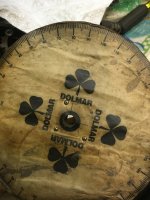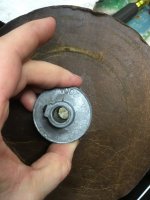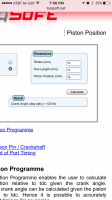The spreadsheet sounded like a good idea, and I was eventually able to replicate the formulas for exhaust and intake duration. The whole radians/degrees thing was sure a pain but eventually Google came through with a solution. The main downside to me is that the wheel readings are logically pretty straightforward to understand, provided you've got tdc set correctly. The formulas right now are a mind-numbing mess to me by themselves, and I have only a very rough feel for how a measurement should translate into a circular measurement of degrees. I am looking forward to trying the measurement process though.
Yes, all sine functions are in radians in Excell (I.E. COS(), SIN(), TAN())
In Excell
degree_value = radian_value * 180/PI()
radian_value = degree_value * PI()/180
For example piston height from the squish band is:
PH = SBC + S/2 + RL - S/2*COS(THETA * PI() / 180) - SQRT( RL^2 - (S/2)^2 * SIN( THETA * PI() / 180) ^2 )
where:
PH = Piston distance from squish band
SBC = squish band clearance
S = Stroke
RL = rod length
THETA = crank angle where 0 deg is at TDC.











